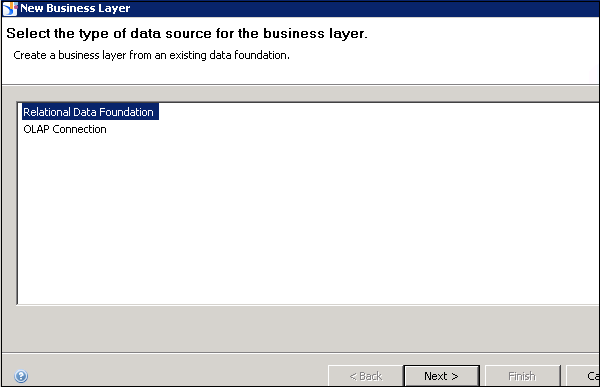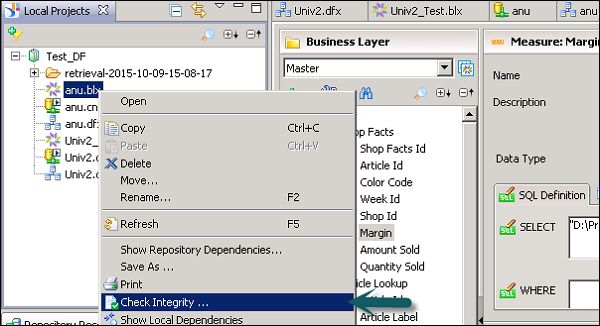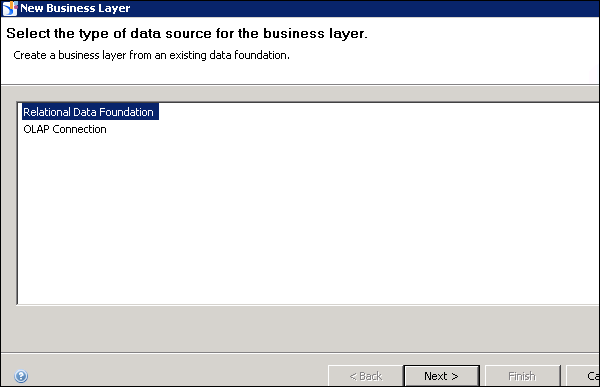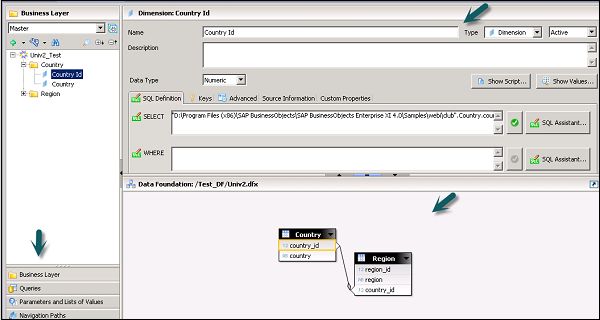SAP IDT - Business Layer
Business Layer in IDT consists of metadata objects like dimensions, measures, attributes, and filter conditions. Business layer can be designed on the top of Data Foundation layer or can be created directly on an Info cube or on a Modeling view in HANA.
When you design a Business Layer, it can be published to the repository or to a local folder. Business layer is used to manage metadata objects before it is published to BI repository.
An Object in Business Layer can have the following three states −
-
Active − This is default state of an object and objects are available in the query panel.
-
Hidden − These objects are valid but are hidden in the query panel.
-
Deprecated − These objects are not valid and hidden.
You can create different type of objects in Business Layer −
-
Dimension − Dimension represents contextual information in Business layer.
-
Measure − Measure represents the factual data on which we perform the analysis. These are numerical values where you perform aggregations and calculations.
-
Attribute − Attribute is defined as an object which is associated with another object to provide more information about the object.
-
Filter − Filters are used to limit the data that are returned in the query. You can define business filters on dimensions and measures by creating and combining conditions.
While using an OLAP data source, you can find the following objects −
- Hierarchy
- Level
- Named Set
- Calculated member
Building a Relational Business Layer
You can create a Business layer on the top of Data Foundation that already exists under Local Project view.
You can also create a new Business Layer in a Local Project view. Right-click on Project name → New → Business Layer.
Follow the wizard → Select the type of Data Foundation → Enter Business Layer name and Description → Select Data Foundation (.dfx) → Finish.
It creates .blx file under local project view and automatically opens under Business Layer Editor.
By default, it takes all the objects as dimensions in the business layer. You can define measures manually using Turn into Measures option or using Type option at the top and projection function to define Aggregation.
You can perform various functions in Business layer to improve the functionality of Business layer −
Attributes to provide descriptive information for dimensions
Additional measures
Pre-defined filters (mandatory or optional) that can limit data returned in queries
Parameters with optional prompts
Set SQL options and SQL generation parameters in the business layer properties
Set up aggregate awareness to improve query performance
You can perform an integrity check on Business Layer. Right-click on Business Layer → Check integrity.
You can select the objects you want to perform integrity check. Click on check integrity. To save the Business layer click the Save icon at the top.
Naming and Data Source for a Business Layer
When you enter a name of a business layer and its description, it defines the name of Universe that is published from Business layer.
To create a Business Layer, you can select two types of data sources: Relational and an OLAP data source.
Relational − The Business Layer is based on a Data Foundation when you use a Relational data source.
OLAP − The Business layer is based on an OLAP cube.
Building an OLAP Business Layer
You can create an OLAP Business Layer in a Local Project view. Right-click on Project name → New → Business Layer.
Follow the wizard → Select the type of Data Foundation OLAP → Enter Business Layer name and Description → click Next.
Objects in the business layer are inserted automatically based on the cube. You can add the following functions to enhance the features in Business Layer −
Using analytical dimensions, hierarchies, and attributes
Named sets
Calculated members
Insert measures
Pre-defined filters (mandatory or optional) to limit data returned in queries
Parameters with optional prompts
Lists of values to be associated with a prompt
Business layer views to restrict the objects seen in the Query Panel
You can perform an integrity check and save the business layer by clicking the Save icon at the top.
Business Layer Editor
Business layer editor is used to manage Business layer objects and its properties efficiently. Business Layer editor is divided into three panes −
- Browsing Pane
- Editing Pane
- Data Source Pane
Business Layer browsing pane consists of different elements of Business Layer −
- Business layer
- Queries
- Parameters and LOVs
- Navigation paths
Business layer editing pane allows you to edit the properties of objects that you select in the browsing pane.
You can define Name of object, description, type and Projection function. You can also check SQL definition, source information, custom properties and advance properties.
The data source pane contains information about Data Foundation or an OALP data source.








